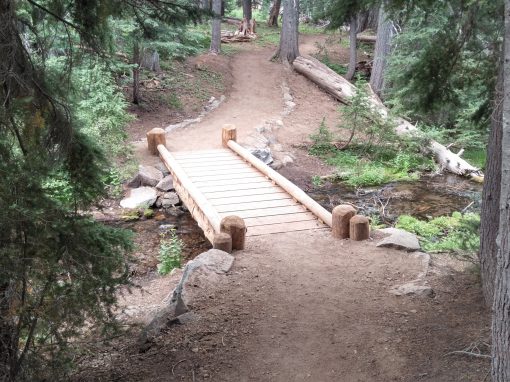Beam and suspension bridges are popular designs that have two very different super and substructure types. This article will compare beam bridges and suspension bridges while outlining the advantages and disadvantages of each. After reading this article, you will better understand the two bridge designs. Then, you can determine which option is the right choice for you.
Differences Between a Beam Bridge vs. Suspension Bridge
A beam bridge is a straightforward structure that consists of vertical abutments or piers (for longer spans) and horizontal beams. This design works well for parks, hiking trails, or remote locations because of its simple and easy to assemble structure.
A suspension bridge is a complex structure consisting of suspension cables in tension and a deck supported by tension cables. This design works well for covering busy waterways, mountain regions, or spanning long distances.
Beam Bridge vs. Suspension Bridge
Beam: The beam bears the weight of the bridge traffic (not the pillars).
Suspension: The cables bear the weight of the bridge traffic.
Beam: Ideal for short spans; it can span 10 to 24 feet for an FRP beam.
Suspension: Ideal for long spans, it can span up to 7,000 feet.
Beam: Can be constructed from fiber reinforced polymer (FRP), steel, or wood.
Suspension: Cables can be constructed from steel.
Beam: Resistance to twisting and bending during traffic.
Suspension: Will move, twist, and sway during the presents of live load traffic.
Beam: Bridge is supported by the ground by abutments.
Suspension: Bridge is suspended in the air with towers at the abutments.
FRP Beam Bridge: Pros & Cons
Now that you understand some of the differences between beam and suspension bridges, here are the advantages and disadvantages of a FRP beam bridge design.
Advantages
- Simple design
- Typically, easy to construct
- Relatively inexpensive compared to other designs
- Modules can be prefabricated before arriving onsite
- Easy to transport parts
- Minimal maintenance if built using FRP
Disadvantages
- Requires piers for longer spans
- Limited span length between structures
- Limited design options for appearance
Suspension Bridge: Pros & Cons
Here are the advantages and disadvantages of a suspension bridge design.
Advantages
- Spans long distances with minimum piers
- Aesthetically pleasing
- The waterway can remain open during the construction process
- Flexible design, deck sections to be replaced as needed
Disadvantages
- Less robust compared to other designs
- High winds cause the bridge to start swaying
- Load limitations will struggle to support heavyweights
- Requires ongoing maintenance (one cable malfunction could cause the bridge to collapse)
Additional Resources
Review some of our resources below if you’re interested in learning more about bridge design, FRP, or Areté Structures.
- The Strengths of a Beam Bridge
- 3 Pedestrian Bridge Design Examples
- FRP vs. Steel Pedestrian Bridge Comparison
- Cost of Building a Pedestrian Bridge Using FRP, Wood, & Steel
- FRP Bridge Specifications
- What is Fiber Reinforced Polymer?
- Areté Structures Bridge Projects
Are You Ready to Learn More About Beam Bridges?
After reading the comparison of beam bridges and suspension bridges, if you think a beam bridge is the best design for your project, contact the Areté Structures team. We can help answer any questions you may have and begin to move your project forward.

